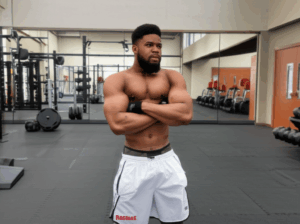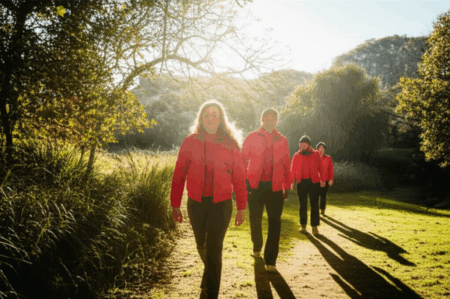Winter’s chill can easily derail your fitness goals, but it doesn’t have to! With the right strategies, you can stay active, motivated, and healthy throughout the colder months. Here are five essential tips to help you winter-proof your fitness routine and keep moving.
1. Embrace Indoor Activities
When the weather outside is frightful, bring your workout indoors. You don’t need a fancy gym to stay active. Here are some ideas:
- Home Workouts: There are countless online workout videos and apps that cater to all fitness levels and interests. Look for options that require minimal equipment, such as bodyweight exercises, yoga, Pilates, or dance fitness.
- Indoor Sports: Consider joining an indoor sports league, such as basketball, volleyball, or pickleball. These activities provide a fun and social way to get your heart rate up.
- Mall Walking: Many shopping malls offer a safe, climate-controlled environment for walking. This is a great option for those who prefer a low-impact activity.
- Stair Climbing: Use the stairs in your home or workplace for a quick and effective workout. Stair climbing is a great way to boost your cardiovascular fitness and strengthen your lower body.
- Bodyweight exercises: You can build strength and muscle using just your body weight with exercises like squats, planks, push-ups, and lunges.
- Indoor Gym Equipment Exercises: if you have access to gym equipment, consider treadmill High Intensity Interval Training (HIIT), Dumbbell Circuit Training Routine or Full Spin Bike Routine
Embracing indoor activities can help you avoid the hazards of winter weather, such as ice and snow, while still staying active and reaching your fitness goals .
2. Gear Up for the Outdoors
If you prefer exercising outdoors, don’t let the cold stop you. With the right gear and precautions, you can enjoy the benefits of exercising in the fresh winter air.
- Dress in Layers: Layering is key to staying warm and dry in cold weather. Start with a moisture-wicking base layer to keep sweat away from your skin. Add an insulating layer, such as fleece or wool, for warmth. Top it off with a waterproof and windproof outer layer to protect yourself from the elements.
- Protect Extremities: When it’s cold, blood flow is concentrated on your body’s core, leaving your hands, feet, and ears vulnerable to frostbite. Wear gloves or mittens, thick socks, and a hat or headband to protect these areas. You may also want to consider footwear with good traction to prevent falls on icy surfaces .
- Warm-Up Properly: Cold muscles are more prone to injury, so it’s important to warm up indoors before heading out for a workout . Do some light cardio, such as jogging in place or jumping jacks, followed by dynamic stretches to get your blood flowing and prepare your muscles for the cold.
- Stay Visible: Winter days are shorter, and it often gets dark earlier. If you’re exercising outdoors, wear bright or reflective clothing so that you’re visible to others, especially if you’re near roads or in low-light conditions . A headlamp or flashlight can also help you see and be seen.
- Breathe Easily: Consider wearing a mask or neck gaiter over your mouth and nose while exercising in cold weather. This can trap moisture and warmth, allowing for smoother air intake and reducing the strain on your respiratory system .
- Check Weather Conditions: Before heading outside, check the forecast for temperature, wind chill, and precipitation. Avoid exercising outdoors in extreme cold, wind, or icy conditions . If the weather is too severe, opt for an indoor workout instead.
3. Set Realistic Goals and Stay Accountable
Maintaining motivation can be challenging during the winter months. Setting realistic goals and finding ways to stay accountable can help you stay on track.
- Set Achievable Goals: Don’t try to do too much too soon. Set small, achievable goals that you can realistically accomplish each week. For example, aim to exercise for 30 minutes three times a week or walk a certain number of steps each day.
- Create a Routine: Decide on a time that suits your energy levels and lifestyle and stay consistent . Whether it’s in the morning, during lunch, or in the evening, stick to your schedule as much as possible.
- Find a Workout Buddy: Having a workout buddy can make workouts more enjoyable and reduce the likelihood of skipping them . Partner up with a friend, family member, or colleague who shares your fitness goals and schedule regular workout sessions together.
- Track Your Progress: Use a fitness tracker, app, or journal to monitor your progress and stay motivated. Seeing how far you’ve come can help you stay committed to your goals.
- Reward Yourself: Celebrate your achievements by rewarding yourself when you reach your fitness goals . Treat yourself to a massage, a new workout outfit, or a healthy meal.
4. Embrace the Benefits of Winter Exercise
Instead of focusing on the challenges of exercising in winter, focus on the unique benefits it offers.
- Boost Your Mood: Exercise is a natural mood booster because it releases endorphins, which promote feelings of happiness and well-being . This can be especially beneficial during the winter months when Seasonal Affective Disorder (SAD) can affect many people.
- Strengthen Your Immune System: Exercise helps boost the immune system by increasing blood circulation and promoting the production of white blood cells, which are important for combating infections . This is especially important during cold and flu season.
- Burn More Calories: Your body works harder to regulate its core temperature in the cold, which means you can burn more calories during your winter workouts compared to those conducted indoors .
- Improve Cardiovascular Health: Cold weather makes your heart work harder to distribute blood throughout the body, making exercise a great cardiovascular workout .
- Increase Endurance: The lack of heat and humidity in winter can make it easier to push yourself harder and longer during your workouts .
- Get Vitamin D: Being outside and taking in more sun during the daylight hours helps increase your body’s manufacturing of vitamin D .
5. Stay Flexible and Listen to Your Body
It’s important to be flexible with your fitness routine and listen to your body, especially during the winter months.
- Adjust Your Routine as Needed: If you’re feeling tired or run down, don’t push yourself too hard. Scale back your workouts or take a rest day.
- Modify Outdoor Activities: If the weather is too cold or icy, modify your outdoor activities or switch to an indoor alternative.
- Stay Hydrated: You may not feel as thirsty in cold weather, but staying hydrated is crucial for performance and recovery . Drink water before, during, and after your workouts.
- Be Mindful of Injuries: Cold muscles are more prone to injury, so pay attention to any pain or discomfort you may be feeling . Stop exercising if you experience any sharp or persistent pain.
- Know When to Rest: It’s okay to skip a workout if you’re not feeling well or if the weather is too severe . Rest is an important part of any fitness routine.
By following these tips, you can stay active, healthy, and motivated throughout the winter months. Don’t let the cold weather derail your fitness goals. Embrace the challenges and enjoy the unique benefits of winter exercise.







